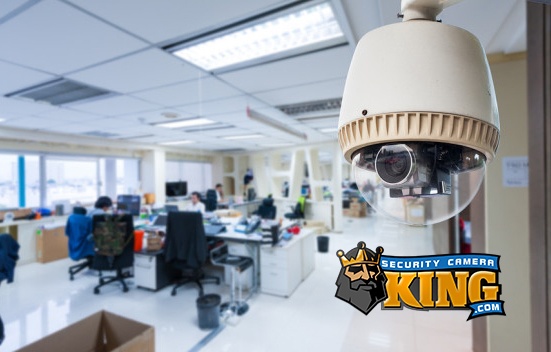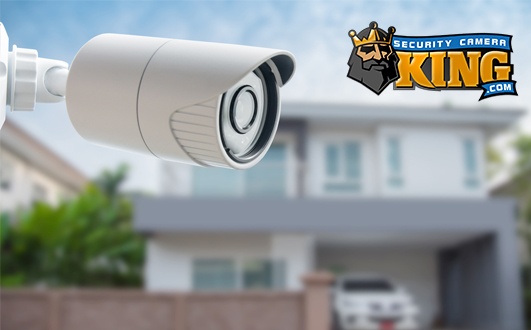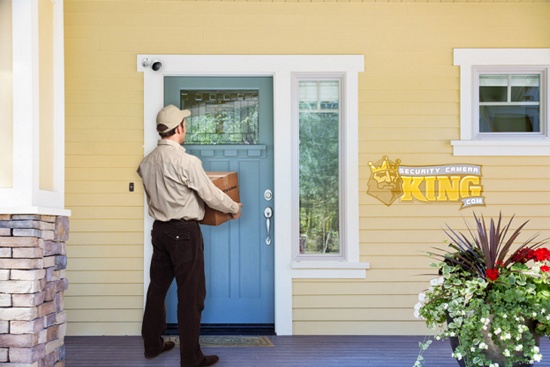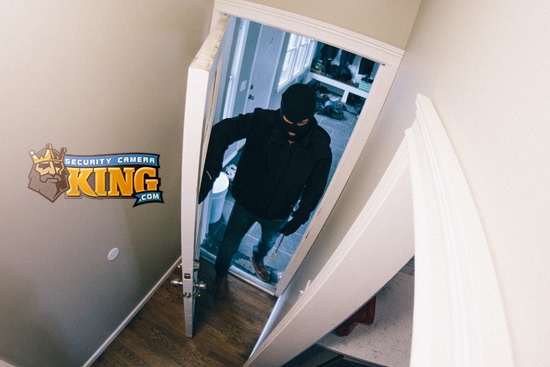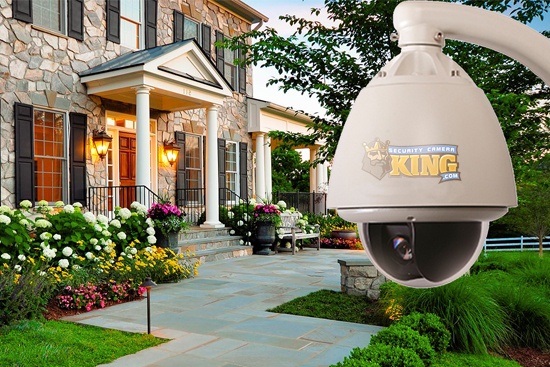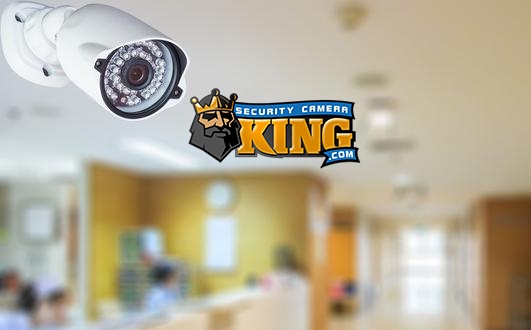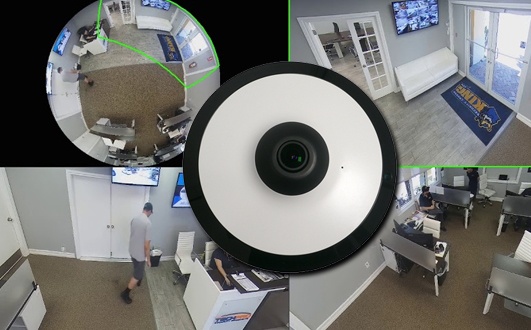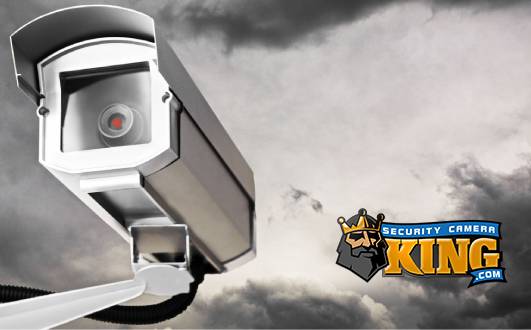Technology is one of my favorite topics and when it comes to security equipment I chose to write about how it works and explain how easy is to work with one of our products we offer.
Today I will be introducing a new technology called HDCVI (High Definition Composite Video interface) and I will be demonstrating how this HDCVI DVR will change the way analog systems will slowly fall and the HD world will dominate the security system market.
What is HDCVI?
HDCVI (High Definition Composite Video interface) is an independent and proprietary technology where it is capable of transmitting High Definition Video over standard coaxial cable. Also, HD-CVI is capable of transmitting up to 2 Megapixel video over existing coax cable infrastructures up to 1600 feet without any third party repeaters Hardware; this provides a much better solution than HD-SDI which is limited to 300 feet transmission.
The following pictures will show you front and back panels of an HDCVI DVR 4CH and 8CH:

4 Channel Back Panel

8 Channel Back Panel

Front Panel 4 & 8 Channel
What type of cable I can use?

HDCVI can be used with regular RG59 (Siamese Cable). This type of cable is found typically on installations where regular analog cameras are setup in place.
This cable is ideal for this application because you will not need to modify anything in your cabling when adding HDCVI cameras and and HDCVI DVR.
You could also use Cat5 & Cat6 cable. This cable will need a different set of fittings such as RJ45 connectors. These fittings are the same type of connectors you will find on a regular Ethernet cable.
How can I identify HDCVI cameras from Analog, HDSDI Cameras & IP cameras?
HDCVI cameras have an extra pair of cables. These cables are color coded with a purple and white color. When connected together the video through HDCVI will stop outputting and then the camera is able to reproduce video over an analog DVR or handheld monitor. This is by design and is just intended to be used solely to adjust the camera while it is mounted and connected to a hand-held monitor.
ANALOG cameras have only 2 wires. These are mostly Power and Video. There are some cameras that will have an extra pair of wires and they are commonly used for PTZ controlling, while some other cameras use these cables to access the OSD menus of the camera.
HDSDI cameras will normally have 3 wires. Two BNC wires and 1 connector for Power. One of the BNC connectors output analog signal, and this will allow you to connect the camera to an analog DVR or handheld monitor. The second BNC connector will allow you to connect to an HDSDI DVR and it will only display HD video through those kind of devices. The third connector is power.
IP cameras will have 2 wires also. These will be an RJ45 style connector and a power connector. Some IP cameras are able to be powered over RJ45 with a single cable. They will be able to distribute power, data and control.
HDCVI, HDSDI, Analog and IP Connectors.
Refer to the following sample pictures to learn the differences between these connectors:

HDCVI Camera Connectors

HDSDI Camera Connectors

Analog Camera Connectors

IP Camera Connector
HDCVI Installation and Configuration
There is not too much involved when installing HDCVI cameras. There is no need to configure any IP address, ports, etc. For installations where there is pre-existing Siamese cable, the procedure is very simple as you just need to replace the analog camera and installing the HDCVI camera in its place.
One of the most notorious features of an HDCVI camera is the fact that the video data, audio and RS485 controls is transmitted over the same cable. Our HDCVI cameras have an OSD (On Screen Display) menu that can be accessed to configure features of the camera video such as brightness, exposure, sharpness, Frames, etc.
To access the OSD, simply connect the camera in the desired channel of your HDCVI DVR and begin to configure the RS485 communication in the DVR on the channel where the camera is connected. An example to this is if the camera is connected on channel 1 then you will need to configure the RS485 settings of that channel. Same thing will occur for any other camera you connect to the DVR.
The following settings will need to be configured in the DVR in order to establish communication with the camera’s OSD. Follow the screenshot below:
Go to: Main Menu>Settings>Pan/Tilt/Zoom and make sure these settings are there.

Another exceptional feature and hassle-free with HDCVI cameras is that when configuring the RS485 control feature on each camera it is not required to change the address or baud rate on each camera, making it extremely easy to install and configure all the cameras without interference.
After you have applied these setting to all the channels then it is time to test the RS485 communication with the cameras and DVR. To access the OSD of the camera, simply right click on the channel you want to open the Pan/Tilt/Zoom Controller:



Navigate through the OSD of the camera using the arrows of the controller, and then if you want to change a value or a feature simply click the right arrow to change values. You will also notice that some of the menus have an arrow in it. That means there is a sub menu that you can access and change settings. To access the sub menus simply click the (ENTER) button and the new menu will appear. To go back menus select the (BACK) option and click enter to go to the original Menu.
Configuring the DVR and its settings
There are a few things we will need to tweak to make sure we get accurate recordings. You can do this using the Setup Wizard as well as doing it manually.
Login to the DVR by right clicking on your mouse and select Main Menu. A prompt for your username and password will appear.
You can use the 888888 or the admin to configure your DVR and the password will be the same as the users name. After you have logged in the MAIN MENU window will appear.

Next click on SETTINGS then GENERAL.

Under the GENERAL settings make sure the system time is set correctly based on your Time Zone. Make sure you click “SAVE” after changing the time. Next you can change the Date Format to MM/DD/YYYY. You can also set the Time Format to 12H or 24H if you like. Here is a screenshot of the general settings:

Next we can see the schedule of how your DVR will be recording. Under the SETTINGS page click on SCHEDULE Then the following window will appear:

If you would like to change the settings of the schedule to Motion Detection (MD), then you will need to uncheck (Regular) and just check (MD) for Period 1. Click on “Copy”; click (All) to apply these settings to all of the channels. Next click the Drop Down arrow under “Period” and select (All) to apply these settings to every day of the week. Click OK when you are done.
At this point your DVR should be recording based on motion event only and you can make sure this is happening by seeing the following icons on the screen:
Indicates motion is occurring when is displayed.
Indicates that the DVR is currently recording an event. This will stay ON until motion ends.
Next setting to configure and one of the most important ones is the ENCODING (Camera Resolution). Under SETTINGS click on ENCODE and the next window will appear:

All of our DVRs, NVRs and IP cameras have the capability of recording at different resolutions, FPS and Bit Rate based on Events, either Motion Detection, Continuous recording (Regular) or an Alarm. The left column is called Main Stream and the right column is called Extra Stream or Assistance.
Lastly you can configure the sensitivity of the camera by going to SETTING and select DETECT.

NOTE: DO NOT click on “Copy” on this section because all of the settings will be copied to channel one, making the DVR not recognized motion on any other channel .
Here you can change the sensitivity of each camera, activate email notification, enable tour and even show a pop-up message when motion occurs on any channel. Always remember to save your settings.
I hope you find this article intuitive and helpful.



